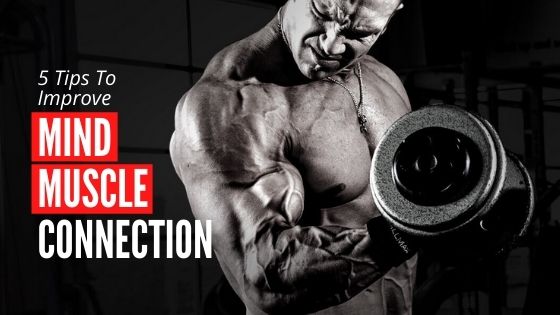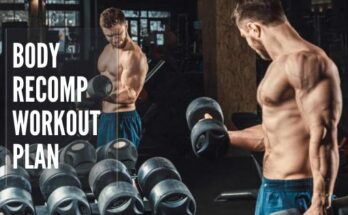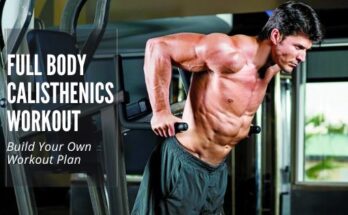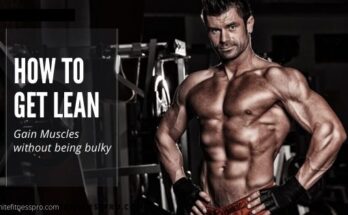Weight training or building muscles is not just limited to physical training. There are some crucial mental aspects too. And that’s where “mind-muscle connection” comes into play.
However many people don’t understand this concept properly. This science-based article will clear all your doubts regarding mind to muscle connection, why it is important, and some practical methods of using this concept in your training.
But first, understand what the mind-muscle connection exactly is. So let’s get started.
What Is Mind-Muscle Connection?
Every physical movement you do in the gym is controlled by your brain. To get the maximum benefit from that movement or exercise, you have to put your mind to it. That means, during the exercises, you have to focus on the tension created in your target muscle.
The mind-muscle connection simply means giving your mental focus on the movement and consciously contracting the muscle.
How it happens? (science stuff)
When you go on to lift weights or use your muscles, a signal to contract the muscles is sent by your brain. Now in order to communicate with the muscles, the brain releases a neurotransmitter called “acetylcholine“.
Now this chemical needs to crosse the synapses (space between the nerve cell and muscle) at the neuromuscular junction. At this junction, it binds to the receptors of muscle fibers and they receive the signal to contract. In this way, muscle contraction happens.
The faster this communication takes place, the more muscle fibers you can recruit. The more muscle fibers you recruit, the better the muscle contraction will happen and the better will be your overall workout.
Why It Is So Important?
There are several studies that prove the importance of using mind-muscle connections while training.
This technique helps in stimulating more your target muscle and hence increases muscle growth.
How??
Well, there are multiple muscles involved in a particular exercise, especially in compound exercises like bench presses, squats, deadlifts, etc. The main muscles you intend to grow are called primary muscles while secondary muscles are used to support them.
Suppose you are doing a barbell bench press for the chest. Now the chest muscles (pectoralis major) are the primary muscles and the triceps and shoulders (deltoids) are your secondary muscles that are also involved in the movement.
For the maximum development of the chest, your goal is to do maximum contraction in your chest muscles while minimizing the involvement of the triceps and shoulders.
Now with a proper mind-muscle connection, your mind will focus only on your chest muscles to contract and hence, provide better chest development. For these reasons, putting your mind into the muscle is so important.
Ways To Improve Mind-Muscle Connection
Here are some tips that help you to develop your mind-muscle connection for better muscle-building results.
1. Put your ego aside
A lot of people do ego lifting and this is one of the silliest mistakes in weight lifting. Maybe they think like they are here to prove something in the gym or whatever So they start lifting too much weight to satisfy their ego.
Well, if you are serious about weightlifting or muscle building, then you have to conquer your ego first. Showing off how much weight you can lift is not going to help you in building muscles.
You might be deadlifting 350 lbs, but if that weight is not annihilating our back muscles, then it is useless. You are just wasting your time and energy, you won’t be able to see any gains. In fact, you are inviting injuries.
If you’re exhausting yourself by lifting super heavy weights, and still not able to stimulate your target muscle properly, then you need to reduce some weight.
Stop ego lifting. Lift that weight only which maximizes the stress on your target muscle, not on the other muscles or joints.
2. Warm-up sets
Warm-up sets are very crucial in building a mind-muscle connection and setting the stage for your main sets.
Start your exercise with a few warm-up sets, especially before the main compound exercises. Do them with light weights with the goal of contracting and stretching the muscle fibers. This will help in increasing your mental focus and improve the quality of your working sets.
Warm-up sets prepare your muscles for the heavy load, hence reducing the risk of injuries too. In addition, they increase the blood flow in your target muscles which in turn, give better muscle growth.
Related: How To Do Warm-up Before A Workout
Always do 1 or 2 warm-up sets before the working sets. This increases blood flow and helps in building a better mind-muscle connection.
3. Use internal focus
While performing an exercise, internal focus simply means to focus on the specifics of that movement. Several studies show that internal focus stimulates more muscle fibers and hence, increases muscle activation.
To analyze this, a team of US researchers did a study in 2009. They rounded up a group of people to perform lat pulldown. They wanted to see how a shift in focus impacts muscle activation in the lats.
For that, they divided all the people into two groups and compared the target muscle activation during lat pulldown.
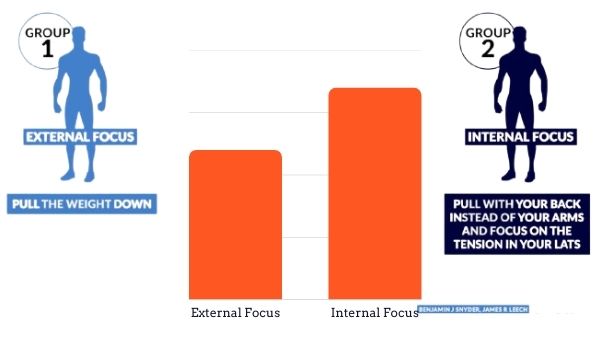
- Group 1 – They simply instructed to do lat pulldown by just “pulling the weight down”.
- Group 2 – They were strictly instructed to “pull the weight down using their back muscles and feel the tension in your lats”.
Result… There was 20% more muscle activation in the group with internal focus.
There are some other studies too which showed similar results. One study was done to check the activation of glute muscles in women during prone hip extension exercises. Subjects who were instructed to lift the weights focusing on their glutes and keeping their hamstrings relaxed experienced almost twice the glutes activation (22% vs. just 10%).
A slight shift in mental focus during exercise boosts the target muscle activation significantly and results in faster muscle growth.
4. Feel each and every rep
Some people get obsessed with lifting weights. They just keep moving the weight up and down without actually training the muscles.
Remember, your ultimate goal is to train the muscles with enough intensity. So, enter the gym with a mindset of training your muscles, not just lifting the weights. And this is all you need to build a strong mind-to-muscle connection.
Suppose you are performing the bench press, then don’t keep moving the weight up and down just for the sake of completing the set. Instead, feel all your reps in your chest muscles. Because the goal is to train the pec muscles, not benching a certain number of pounds.
Don’t finish the set just by moving the weight up and down, feel each n every rep in your target muscle.
5. Flex in between sets
After finishing a set, take some time (about 10 seconds) to flex your working muscles. It would be better if you did it in front of the mirror.
Flexing the working muscle in between the sets boosts blood flow in that muscle. This increases the pump and provides more nutrition to the muscles which results in more muscle growth.
Let’s take the biceps for a minute. After finishing a set of preacher curls, put the rod down, and flex your biceps for a few seconds.
After finishing a set, flex your working muscle for a few seconds. This improves mind-muscle connection and increase blood flow in your target muscle.
Mind-Muscle Connection – Conclusion
No matter how hard you are pushing in the gym, to reach your full potential, you have to improve your mind-muscle connection. You can use all these five ways to connect your mind and muscles.
To boost your athletic performance, it is necessary to build a proper mind-muscle connection. This will help you in creating a “flow state” during the workout, which is very important to get the max out of your workout.
So, put your ego outside the gym, remove all the distractions, and use your full focus on lifting the weights and training the muscles only. There’s no point in wasting time and energy in the gym if you’re not working your muscles effectively.
So don’t just train harder, train smarter too.
Thanks for reading this so far. For any query regarding fitness, you can ask me in the comments. For daily fitness facts and motivation, please follow us on Instagram.

